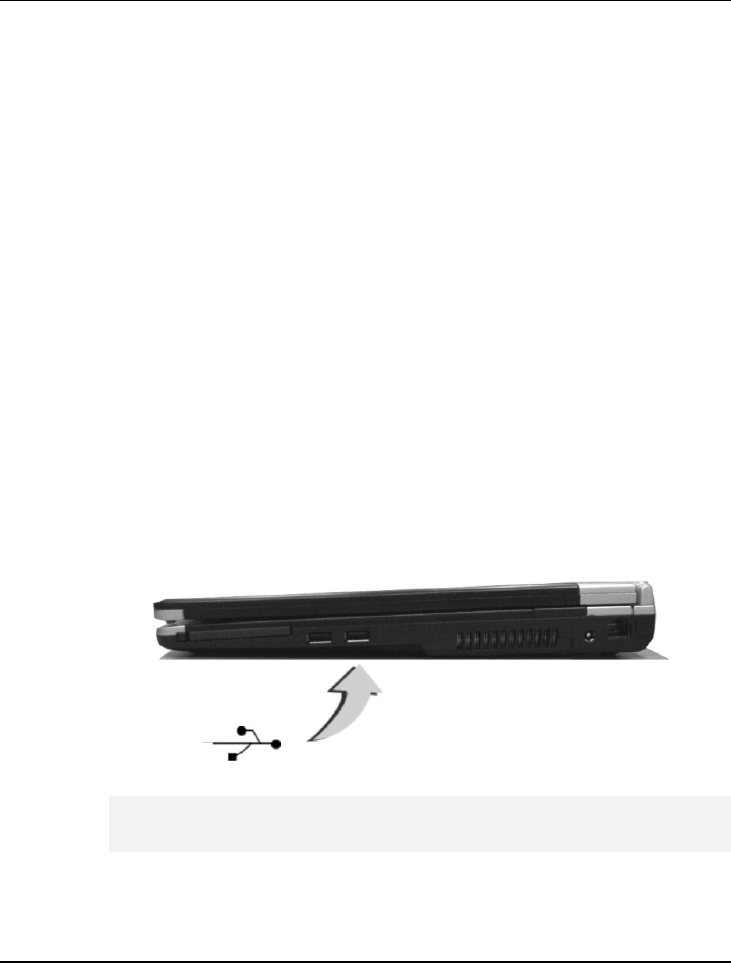
Notebook User Guide
5.1 Using the USB Port
USB (Universal Serial Bus) is a hardware interface that enables you to connect
multiple devices (such as printers, mice, keyboards, storage devices, joysticks,
digital cameras, and video conference cameras, etc.) to your notebook
computer, and up to 127 devices can be attached. Besides, USB’s hot swap
capability allows everything to be plugged in and unplugged without turning
the system off.
Microsoft, HP, Compaq, Intel, Agere, NEC and Philip are seven core
members of USB-IF to have worked on USB 2.0 standardization. USB 2.0
offers data transfer rate up to 480Mbps (megabits per second) compared to
USB 1.1 devices, which transfer at speeds of 12Mbps. So, you could know that
USB 2.0 can transfer data between the computer and its peripherals 40 times
faster than USB 1.1. However, USB 2.0 is fully backward compatible, you will
be able to use a USB 1.1 device in a USB 2.0 compliant system.
+
Depending on your operational requirements, you may need to disable
other ports in order to release system resource for the USB port.
80


















